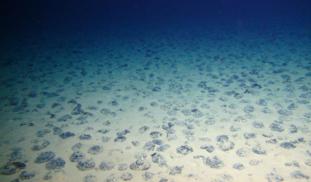Please wait...
About This Project
The deep sea is enriched with metals and amazing life forms. Electroactive microbes can get energy from metals, creating conditions that could sustain high animal diversity in the abyss. With genomic data to expand a large, public diversity dataset, we can use multi-omics and phylogenetics to reveal the electrobiogeochemical basis of biodiversity maintenance. It is urgent to know the role that metals play in such eco-evolutionary mechanisms before they are removed by the deep-sea mining rush.

Browse Other Projects on Experiment
Related Projects
How do polar bears stay healthy on the world's worst diet?
Polar bears survive almost entirely on seal fat. Yet unlike humans who eat high-fat diets, polar bears never...
Uncovering hidden insect diversity associated with a likely undescribed gall-forming midge
Does a likely undescribed species of gall-forming midge (pers. comm. Ray Gagné) on Eriodictyon plants (Yerba...
Macrofungi of the California archipelago
The eight islands of the California Archipelago are a well-studied biodiversity hotspot — but we know almost...



